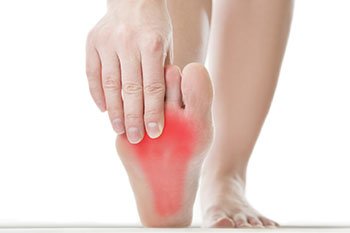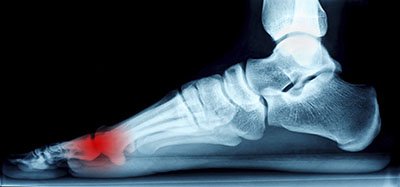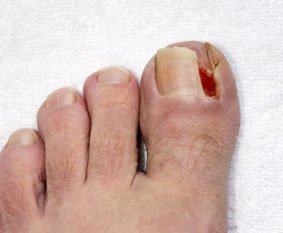Uncategorised
Sports Medicine

If you’re suffering from pain in any of your feet, ankles, or areas of your lower legs, you’ll want to visit a podiatrist. A podiatrist is a Doctor of Podiatric Medicine (DPM). Podiatrists study, diagnose, and treat conditions and injuries affecting the above-mentioned areas. Your primary physician may refer you to a podiatrist if they suspect problems in your feet, ankles, and lower extremities.
Podiatrists finish 4 years of podiatry school and a 3-year hospital residency. After residency, podiatrists are certified by the American Board of Podiatric Medicine. Podiatrists can pursue specialized fellowship training and advanced certifications granted by various institutions. Podiatric surgeons, for example, are podiatrists who specialize in foot surgery. They are certified by the American Board of Foot and Ankle Surgery. Like all doctors, podiatrists must be licensed to practice in the state they work in.
Podiatrists treat people of all ages, and most podiatrists treat a variety of general foot and ankle conditions. These include heel pain, ingrown toenails, toenail fungus, bunions, arthritis, plantar warts, hammertoes, flat feet, neuromas, arthritis, and diabetic foot. Many podiatrists specialize in specific foot concerns or areas of foot medicine. These include bunion removal or correction, wound care, orthotics, sports medicine, fractures, and pediatrics.
Podiatrists are true foot and ankle specialists. If you have concerns about your feet, ankles, or lower extremities, consult with a local podiatrist.
Plantar Fasciitis

Plantar fasciitis is a foot condition that particularly causes a great deal of pain in the heel area. Some patients have described the pain as stabbing and is typically felt in the morning, when first getting out of bed. You may also experience pain with this condition if you stand or sit for long periods of time throughout the day. The development of plantar fasciitis is quite common among runners, those who are overweight, and those who do get enough support from their footwear.
When small tears occur on the fascia, it may become inflamed, especially if too much pressure is put on the tissue. It’s extremely important that you seek professional help as soon as you feel any type of foot pain. If plantar fasciitis is left untreated, there’s a high chance you may develop chronic heel plan. You may also develop other issues connected with your foot, knee, hip, or back, all due to the body walking differently to relieve pain felt from plantar fasciitis.
For more information about plantar fasciitis, we recommend you consult with a podiatrist for a proper diagnosis and to discuss a treatment plan.
Morton's Neuroma

The pain caused by Morton’s neuroma is typically experienced at the ball of the foot. Many have described the sensation as feeling like they have a pebble stuck in their shoe. Because of this, those with the condition may find walking to be more difficult and uncomfortable. They may also experience a numbing or burning sensation in the foot. One of the most common factors that influence the development of Morton’s neuroma is improper footwear. Those who generally wear tightly fitted shoes or shoes with higher heels are more at risk at getting Morton’s neuroma. Having a foot abnormality may also increase the risk of getting this condition, as it may cause instability, thus adding more pressure onto the nerves of the foot. Certain foot conditions such as bunions, hammertoes, and flat flat feet have also been known to lead to Morton’s neuroma if not treated promptly.
Athletes have a tendency of getting Morton’s neuroma due to repetitive motions and pressure placed on the ball of the foot while running or jumping. Morton’s neuroma may also develop as a result of an injury to the foot.
To learn more about Morton’s neuroma and treatments that work best for your case, consult with your podiatrist.
Ingrown Toenails

Signs that may indicate the formation of an ingrown toenail include redness, pain, swelling of the surrounding skin, possible bleeding or oozing of pus, and an overgrowth of the skin around the nail. The surrounding skin may also feel tender and become swollen or hardened. Most ingrown toenails are diagnosed by a simple physical exam; however, an x-ray may be required to show how deep the nail has grown into the skin of the toe.
Many factors influence the likelihood of developing an ingrown toenail. The most common way ingrown toenails are formed is due to an incorrect method in how the toenails are trimmed. If you cut your toenails too short or cut them at an angle, you’re putting yourself at risk of getting this condition. Another main factor that contributes to ingrown toenails is the choice of footwear. Those who commonly wear tightly fitted shoes, such as high heels, that do not give the toes enough room, put too much pressure on the big toes. This can create an ingrown toenail. To alleviate the pain, a small piece of cotton may be fitted underneath the nail. However, in more serious cases, total removal of the nail may be necessary.
For a proper diagnosis and advised treatment plan, we recommend you seek the care of a podiatrist as soon as you notice the warning signs of an ingrown toenail.



